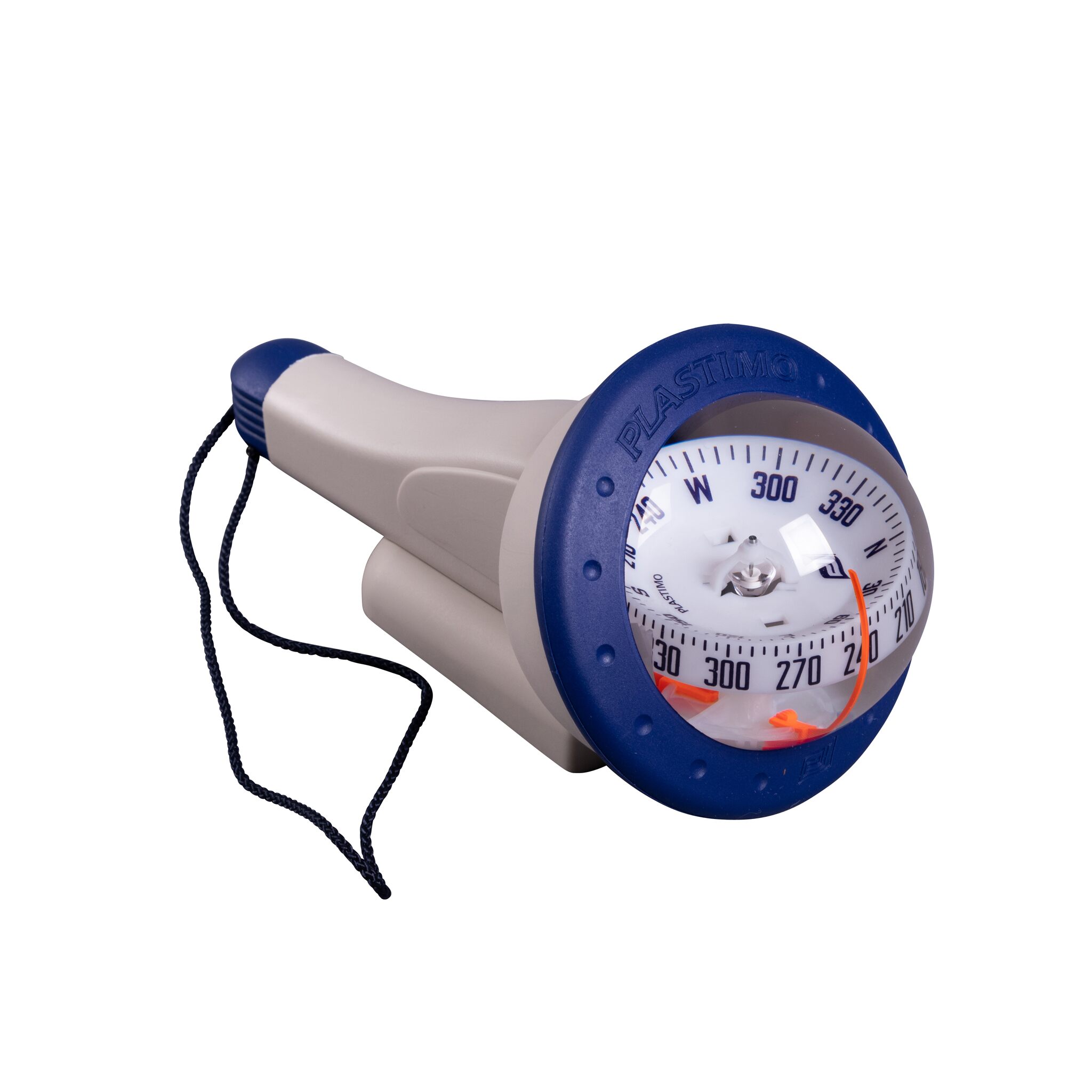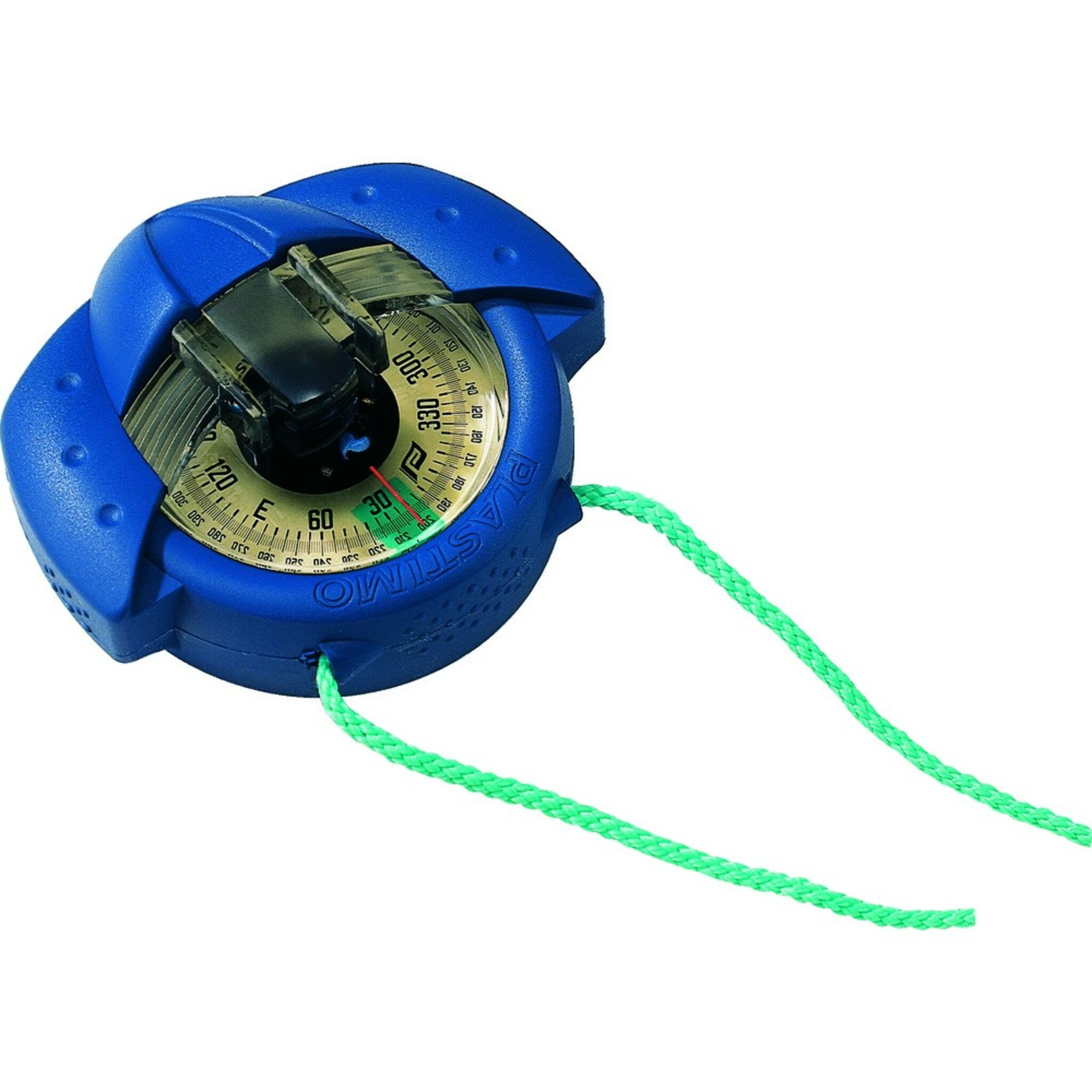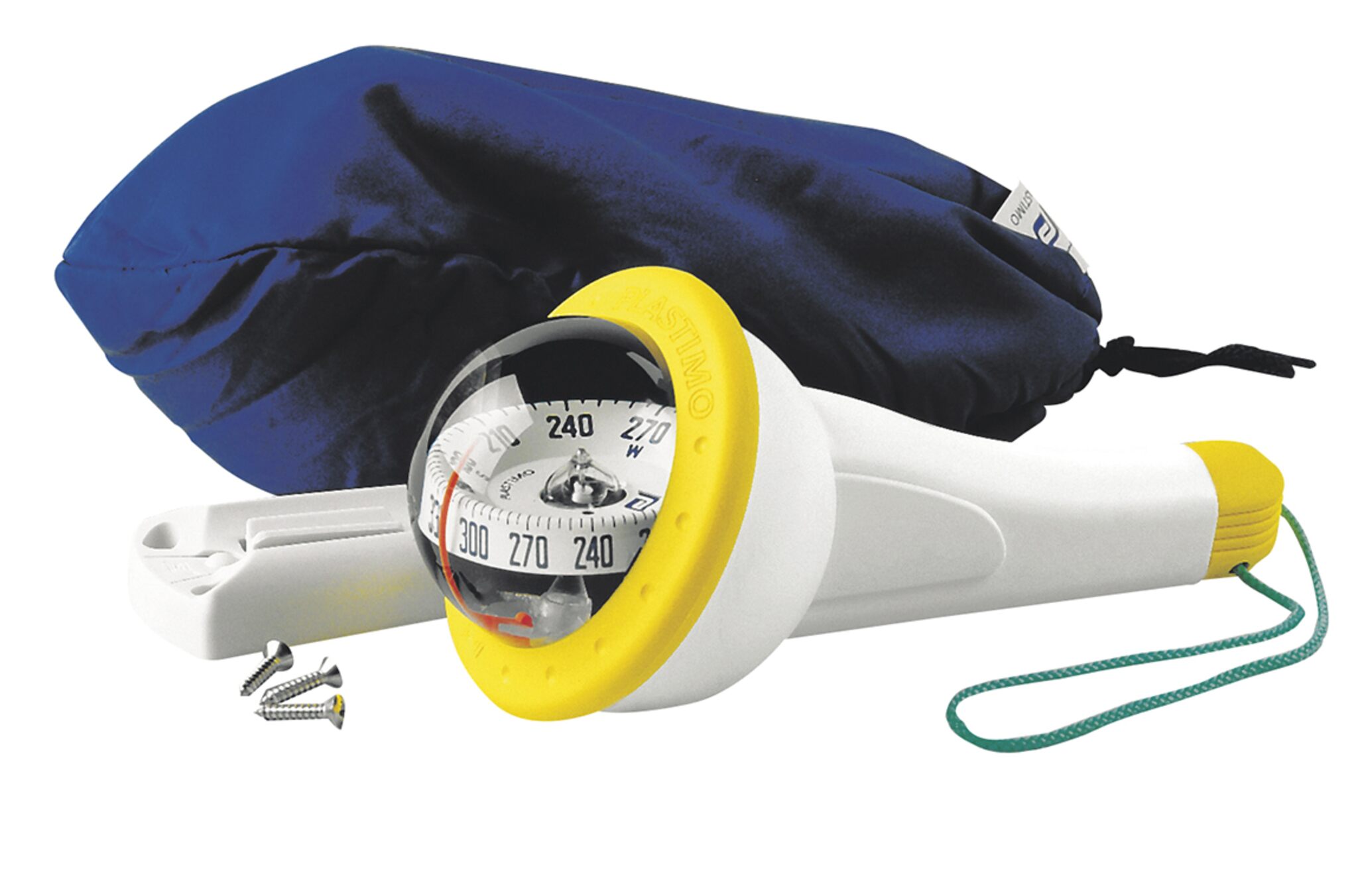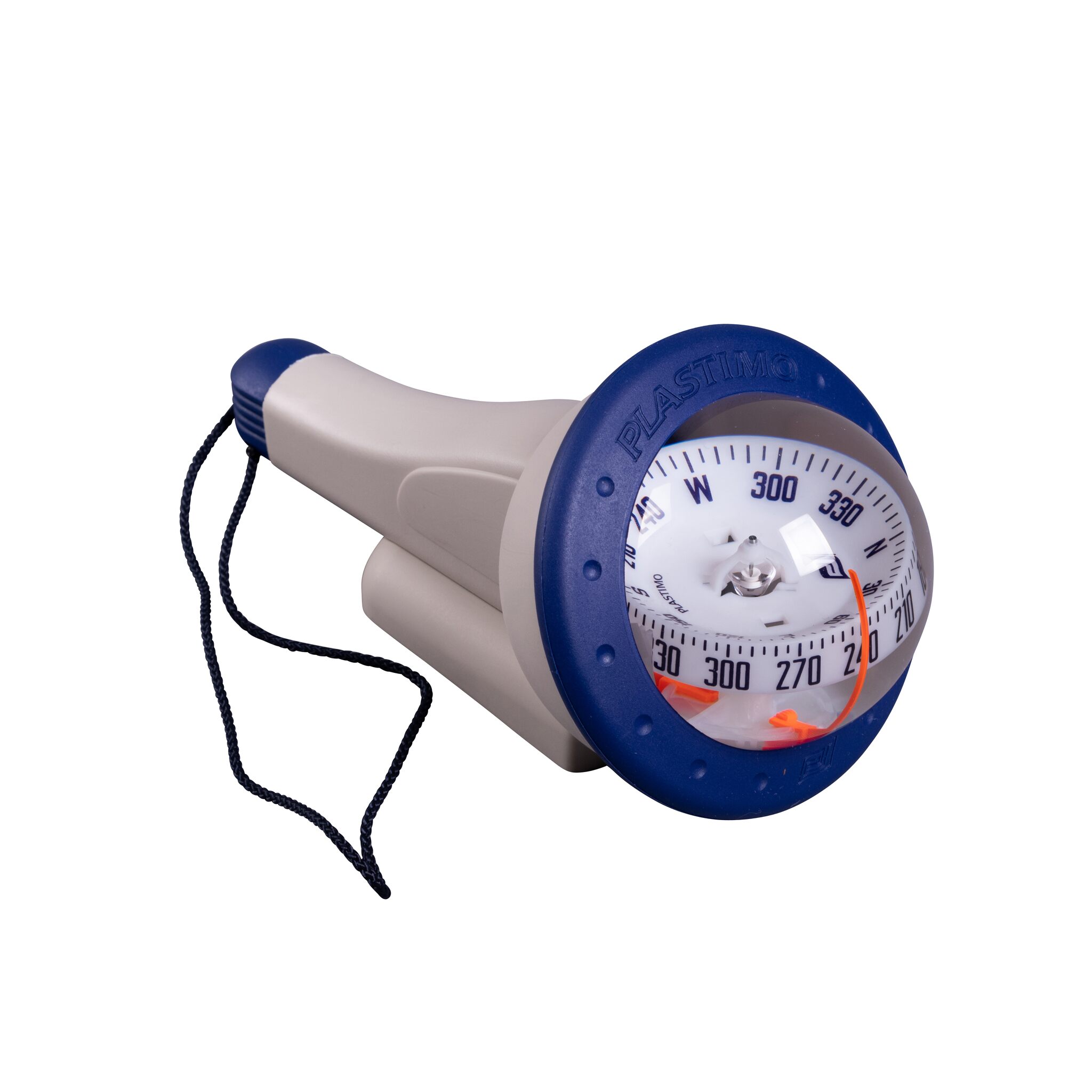Terrestrial navigation with the hand bearing compass
In terrestrial navigation, the location of the ship can be determined by compass bearing. This is especially necessary when the shipboard electrical and electronic systems fail and one cannot rely on a handheld GPS unit that is independent of the ship's electrical system.
A magnetic compass bearing can be used to determine the direction in which a particular bearing object can be seen from the ship. With the hand bearing compass, you take a bearing over the rear sight and read the bearing degree on the compass card. Before the bearing is entered on the chart, it must be corrected for local declination and deviation. The Plastimo Iris 100 and Silva 70 models are universal compasses that can also be used as steering compasses. They are held and read with the arm extended as far as possible outside the range of the ship's deviation. This makes the deviation negligible.
The Plastimo Iris 50 model, on the other hand, is a hand-only bearing compass that is held directly to the eye when taking bearings. Therefore, the bearing values must be loaded with the deviation in addition to the local declination before entering them in the nautical chart. For example, if you take a bearing on a lighthouse whose position is known from the nautical chart, you will obtain a bearing line on which the ship is located. If you take bearings of two stationary objects in quick succession, you will get two bearing lines at the intersection of which the ship is located. If you take a bearing of three stationary objects in the same way, you get an error triangle in whose area you assume the ship's location.
Marine binoculars (7x50) with integrated compass, such as Steiner Commander, Steiner Navigator, the awn binoculars, Searanger IV or Minox Nautik binoculars allow very convenient terrestrial bearings.
Some binoculars also have a graticule in the reading field, which allows the estimation of distances of the bearing object.




